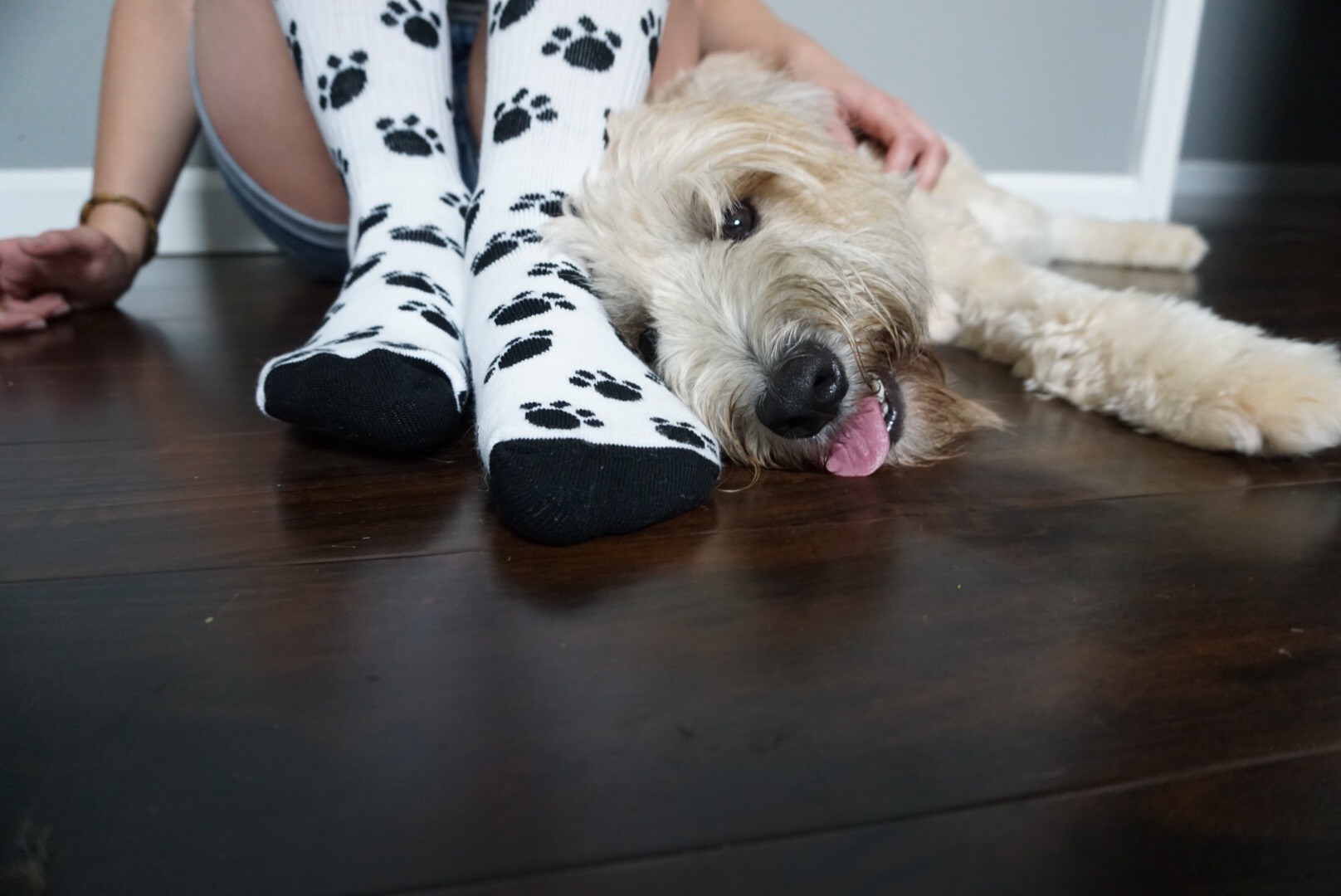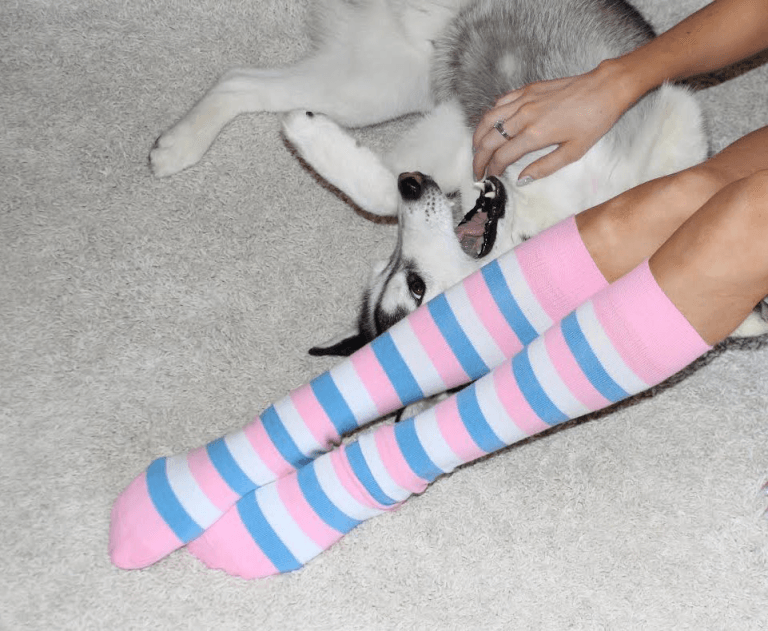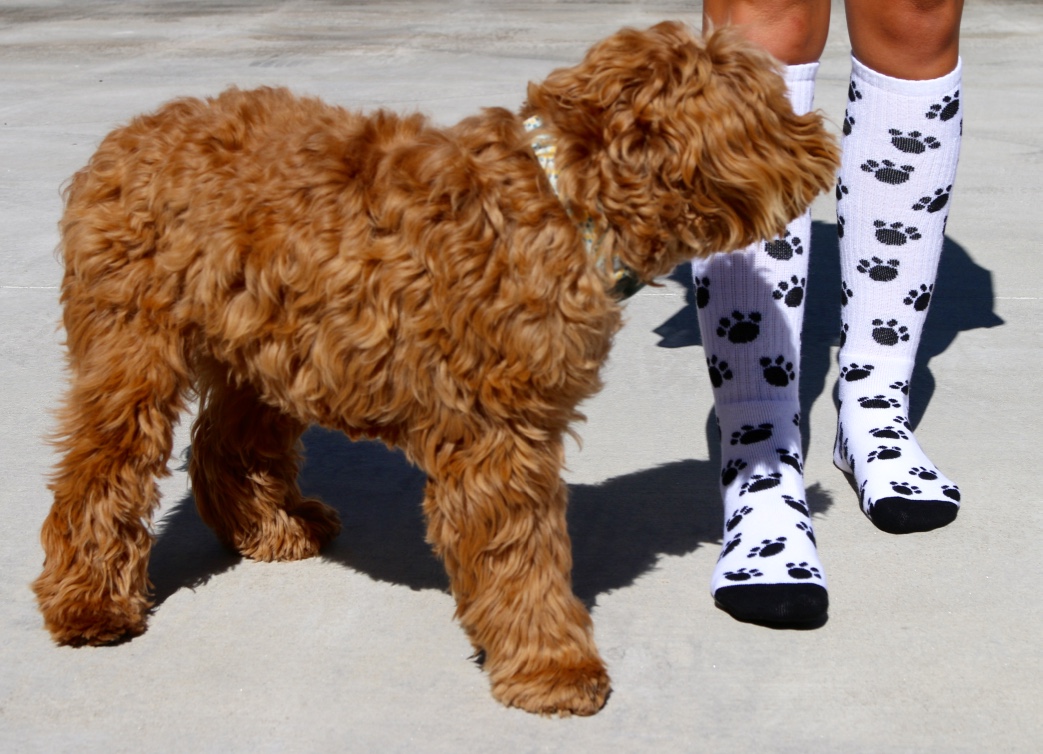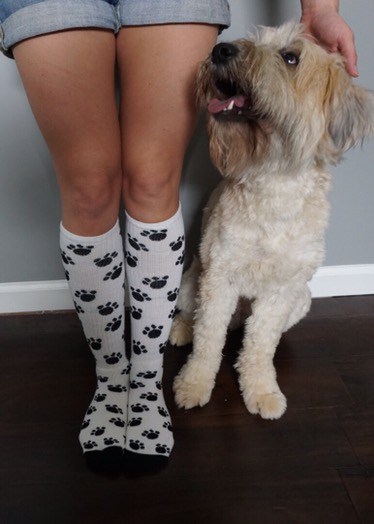Why does my dog steal my socks?
If you have ever caught your furry friend sneaking off with your socks, you may have wondered why dogs engage in this peculiar behavior. Understanding the reasons behind their actions can give us insight into their instinctual behaviors and help us find ways to discourage this habit. In this article, we will explore the fascinating world of sock-stealing dogs and explore the reasons why they find socks so irresistible.
Understanding Your Dog's Behavior
Before diving into the allure of socks for dogs, it's essential to understand their behavior. Dogs are complex creatures with intricate instincts and unique personalities. By nature, they are curious creatures who explore the world around them through their senses. These instincts, combined with their desire for novelty and their inherent need for stimulation, can lead to some interesting and sometimes mischievous behaviors.
One fascinating aspect of a dog's behavior is their ability to communicate through body language. Dogs use a variety of signals, such as wagging their tails, barking, and even subtle facial expressions, to convey their emotions and intentions. Understanding these cues can provide valuable insights into your dog's state of mind and help you better respond to their needs.
The Role of Instincts in Dogs
Dogs have inherited a variety of instincts from their wild ancestors. These instincts, including hunting, chewing, and retrieving, play a significant role in their behavior. In the case of sock stealing, the instinct to hunt and retrieve may come into play. Dogs may view socks as prey or toys and instinctively feel the urge to chase, capture, and keep them.
It's important to remember that while instincts are a part of a dog's behavior, they can be modified and redirected through training and proper guidance. By providing alternative outlets for their natural instincts, such as engaging in interactive play or providing them with appropriate chew toys, you can help satisfy their needs in a more constructive manner.
The Impact of Training on Dog Behavior
While instincts play a role in dog behavior, training also plays a crucial part in shaping their actions. Dogs that have been properly trained understand boundaries and know what is acceptable behavior. However, some dogs may still struggle with the temptation of socks due to their inherent desires and lack of proper training in this specific area.
Training your dog to resist the allure of socks can be a challenging task. It requires consistency, patience, and positive reinforcement. By teaching your dog the "leave it" command and rewarding them with treats or praise when they comply, you can gradually discourage their sock-stealing behavior. Additionally, providing them with plenty of mental and physical stimulation through activities like obedience training, puzzle toys, and regular exercise can help redirect their energy and reduce their inclination to engage in undesirable behaviors.
Understanding your dog's behavior and addressing their needs is crucial for maintaining a harmonious and fulfilling relationship. By recognizing the role of instincts and the impact of training, you can navigate the world of sock stealing and other behavioral challenges with your furry companion.
The Attraction of Socks to Dogs
Have you ever wondered why dogs seem to have an inexplicable fascination with socks? It's a phenomenon that has puzzled pet owners for years. Let's delve deeper into this intriguing topic and explore the two primary factors that contribute to the charm of socks for our canine companions.
The Scent Factor: Why Dogs Love Smelly Socks
Dogs possess an extraordinary sense of smell, far superior to our own. They have approximately 300 million olfactory receptors in their noses, compared to our mere 6 million. It's no wonder they can detect the faintest whiff of a treat from miles away! When it comes to socks, their olfactory prowess comes into play.
Our furry friends are naturally drawn to the scent of their owners. They find solace and comfort in our unique odor, which acts as a familiar and reassuring presence in their lives. Socks, being in close contact with our feet, absorb and retain our individual scent. To dogs, these seemingly ordinary pieces of fabric become powerful vessels of familiarity and security.
Imagine the joy and excitement that fills a dog's heart when they stumble upon a discarded sock. It's like finding a treasure trove of olfactory delights! The combination of their heightened sense of smell and the comforting aroma of their beloved human makes socks irresistible to our furry companions.
The Texture Appeal: Why Dogs Love the Feel of Socks
While the scent of socks may be a major draw for dogs, there's another aspect that adds to their allure - the texture. Socks have a unique feel that can be intriguing and captivating to our four-legged friends.
The soft fabric of socks provides a pleasant tactile experience for dogs. The gentle touch against their paws or snouts can be soothing and enjoyable. It's like a mini massage session for their sensitive skin, offering a moment of relaxation and contentment.
But it's not just the overall texture that entices dogs; it's the variety of textures found in socks that adds an extra layer of fascination. From ribbed patterns to smooth surfaces, socks offer a smorgasbord of tactile sensations. Dogs love exploring and investigating different textures, and socks provide the perfect canvas for their curious paws and mouths.
In fact, chewing on socks can serve multiple purposes for dogs. For puppies, who are going through the teething phase, socks can provide much-needed relief for their sore gums. The act of gnawing on the fabric helps alleviate discomfort and provides a satisfying outlet for their natural chewing instincts.
Moreover, for some dogs, chewing on socks can act as a form of stress relief. Just like humans have stress balls or fidget spinners, dogs may turn to socks as a way to alleviate anxiety or boredom. The repetitive motion of chewing can have a calming effect on their nervous system, helping them relax and unwind.
So, the next time you catch your furry friend eyeing your socks with a mischievous glint in their eyes, remember that it's not just a random obsession. It's a combination of their incredible sense of smell and the captivating textures that make socks an irresistible attraction for dogs. Embrace their curiosity and provide them with appropriate chew toys or interactive games to satisfy their innate need for exploration and stimulation.
The Dangers of Sock Stealing
While sock stealing may seem harmless, it comes with its share of potential risks and dangers. It's crucial to be aware of these risks to ensure the safety and well-being of your furry friend.
As adorable as it may be to see your dog prancing around with a stolen sock in their mouth, there are hidden dangers lurking beneath the surface. Let's dive deeper into the potential risks associated with sock stealing and why it's important to address this behavior.
The Risk of Ingestion and Choking
Dogs have an uncanny ability to swallow things they shouldn't. Socks, being small and easily accessible, can become a tempting treat for our canine companions. However, this innocent act of sock stealing can quickly turn into a medical emergency.
Imagine your dog accidentally swallowing a part of the sock or worse, getting it stuck in their throat. The consequences can be dire, leading to choking and difficulty breathing. In such situations, immediate intervention is crucial to save your dog's life.
It's not uncommon for dogs to exhibit signs of distress, such as pawing at their mouth, gagging, or wheezing, when a sock becomes lodged in their throat. As responsible pet owners, we must be vigilant and take swift action to prevent any harm to our furry friends.
The Potential for Digestive Issues
While the thought of a dog swallowing a sock may seem comical, the reality is far from amusing. When a sock enters your dog's digestive system, it can cause blockages or obstructions along the way.
These blockages can lead to severe discomfort, pain, and even life-threatening conditions. If left untreated, a sock lodged in the digestive tract can cause damage to the intestinal walls, leading to infection or perforation. In such cases, surgical intervention may be necessary to remove the foreign object and restore your dog's health.
It's important to note that not all dogs will exhibit immediate symptoms of a sock obstruction. Some may experience mild discomfort or exhibit changes in appetite, while others may show no signs at all. Regular monitoring of your dog's behavior and being aware of any sudden changes can help detect potential issues early on.
Prevention is key when it comes to sock stealing. Ensuring that your dog has access to appropriate chew toys and engaging in regular training can help redirect their attention away from socks. Additionally, keeping your socks safely stored away and out of reach can minimize the temptation for your furry friend.
Remember, the dangers of sock stealing go beyond the inconvenience of missing footwear. By understanding and addressing this behavior, we can protect our dogs from potential harm and ensure their well-being for years to come.
How to Discourage Sock Stealing
If your dog has developed a habit of stealing socks, there are several steps you can take to address and discourage this behavior.
Training Techniques to Stop Sock Stealing
Consistency and positive reinforcement are key when training your dog to stop stealing socks. Teach them the "leave it" or "drop it" commands and reward them with treats and praise when they obey. Redirect their attention to appropriate toys or chews to satisfy their natural instincts for chewing and play.
Creating a Distraction-Free Environment
Prevention is always better than cure. Minimize the availability of socks by keeping them out of your dog's reach. Make sure to provide them with engaging toys and puzzles that keep them mentally stimulated and focused on appropriate activities.
When to Seek Professional Help
In some cases, as much as we try to address the issue ourselves, the habit of sock-stealing can become a compulsive behavior that requires professional intervention. Look out for signs such as excessive obsession with socks, heightened anxiety when socks are present, or unresponsiveness to training techniques. If you notice these signs, consult a qualified dog behaviorist who can assess the situation and provide tailored guidance.
Recognizing Signs of Compulsive Behavior
Compulsive behaviors in dogs can manifest in various forms, including excessive licking, pacing, or fixation on certain objects. It's essential to recognize these signs and address them promptly to prevent further escalation.
Finding a Qualified Dog Behaviorist
A dog behaviorist specializes in assessing and modifying behaviors in dogs. They can help identify the underlying causes of compulsive behaviors and develop a customized plan to address them. Seek recommendations from your veterinarian or local pet community to find a reputable and qualified behaviorist in your area.
In conclusion, the habit of sock stealing in dogs can be attributed to their instinctual behaviors, attraction to scents, and the sensory appeal of socks. Understanding these factors can help us address and discourage this behavior. Remember to prioritize your dog's safety by minimizing potential dangers and seeking professional help when necessary. With patience, consistency, and positive reinforcement, you can guide your furry friend toward more appropriate and enjoyable activities, leaving your socks safely on your feet.





